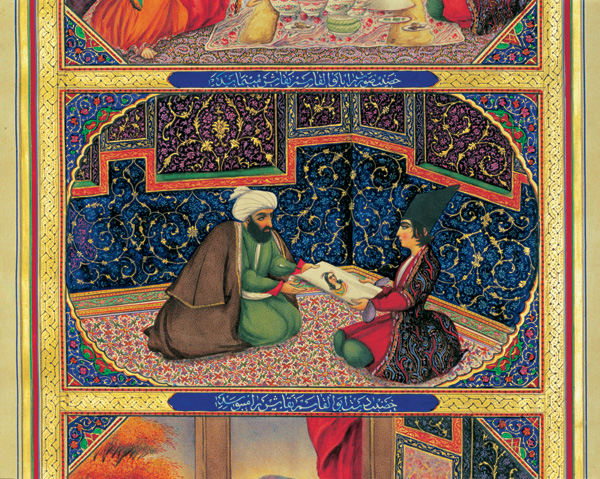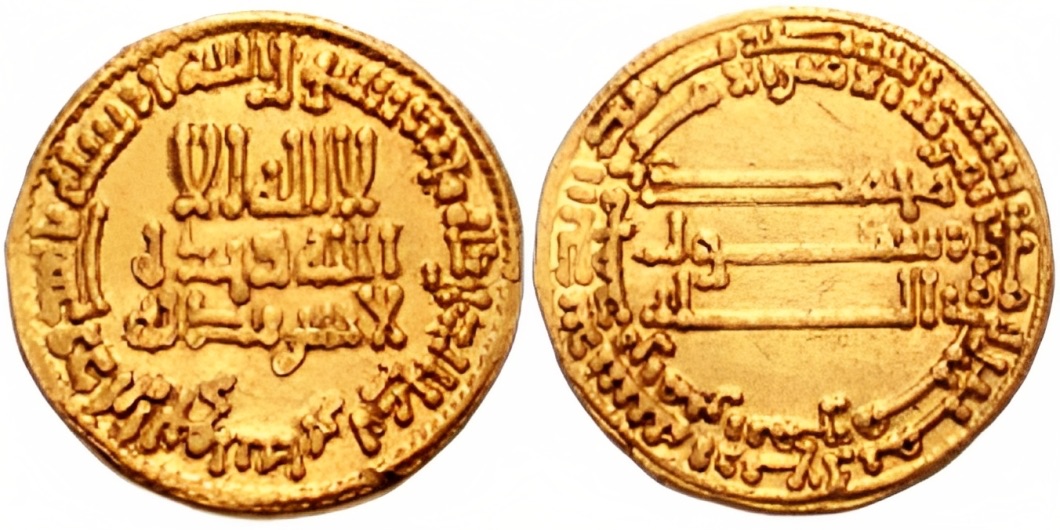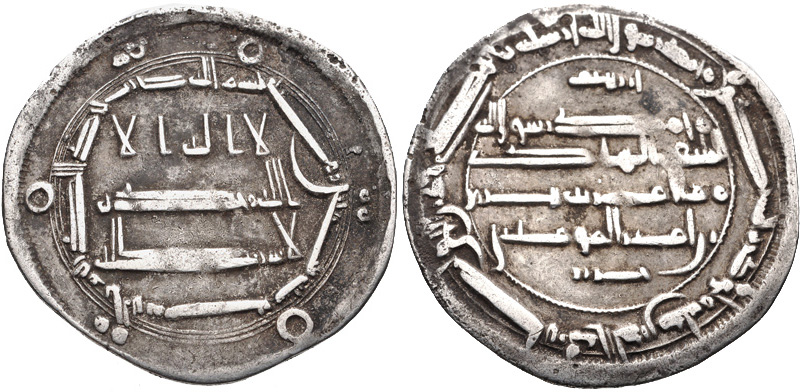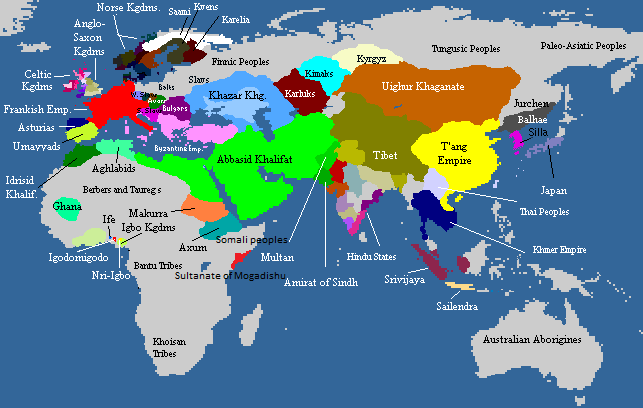|
Al-Khayzuran Bint Atta
Al-Khayzuran bint Atta ( ar, الخيزران بنت عطاء, al-ḵayzurān bint ʿaṭāʾ) (died 789) was the wife of the Abbasid Caliph Al-Mahdi and mother of both Caliphs Al-Hadi and Harun al-Rashid. She ruled de facto from 775 to 789 during the reign of her husband and sons and is known for her immense influence on state affairs. While not formally a ruler, al-Khayzuran was nevertheless the first woman in the history of Islam to rule de facto and was the first woman in the history of Muslims to have gold coins in her name. She became one of the most powerful women of her time under the name of her husband and sons, al-Mahdi, al-Hadi and al-Harun. During the reign of al-Mahdi, al-Khayzuran often appeared at the court when the caliph was present and also used great political power, and caliph sought her views on most matters before issuing orders. Al-Khayzuran was also the first woman to have her own bureaucracy and court and accept petitions and the audience of officials and ... [...More Info...] [...Related Items...] OR: [Wikipedia] [Google] [Baidu] |
Abbasid Caliph
The Abbasid caliphs were the holders of the Islamic title of caliph who were members of the Abbasid dynasty, a branch of the Quraysh tribe descended from the uncle of the Islamic prophet Muhammad, Al-Abbas ibn Abd al-Muttalib. The family came to power in the Abbasid Revolution in 748–750, supplanting the Umayyad Caliphate. They were the rulers of the Abbasid Caliphate, as well as the generally recognized ecumenical heads of Islam, until the 10th century, when the Shi'a Fatimid Caliphate (established in 909) and the Caliphate of Córdoba (established in 929) challenged their primacy. The political decline of the Abbasids had begun earlier, during the Anarchy at Samarra (861–870), which accelerated the fragmentation of the Muslim world into autonomous dynasties. The caliphs lost their temporal power in 936–946, first to a series of military strongmen, and then to the Shi'a Buyid Emirs that seized control of Baghdad; the Buyids were in turn replaced by the Sunni Seljuk Turks i ... [...More Info...] [...Related Items...] OR: [Wikipedia] [Google] [Baidu] |
Jarya
Jarya, also called jariyah and jawaris, was a term for a certain type of slave girl in the medieval Islamic world. They were "slaves for pleasure" (muṭʿa, ladhdha) or “slave-girls for sexual intercourse” (jawārī al-waṭ), who had received special training in artistic skills. In contrast to the Qiyan, however, they normally did not perform for other men than the man in whose harem they were placed. History The slave category and of the Jarya - similar to the qiyan - rose to fame during the Abbasid Caliphate era, possibly because free Arab women became more and more secluded from society during this time period. They were acquired from the slave market or captured as war booty. The term were applied to such slave girls who, by instruction or self education, acquired a great knowledge of artistic skills and intellectual knowledge by which they could entertain a man, rather than by sexuality and physical beauty. They could study issues from music and poetry to religion, hist ... [...More Info...] [...Related Items...] OR: [Wikipedia] [Google] [Baidu] |
Lubana Bint Ali Ibn Al-Mahdi
Lubāna bint ʿAlī ibn al-Mahdī ( ar, لبانة بنت علي بن المهدي) was an Abbasid princess, Arabic poet and the principal wife of caliph al-Amin. She was the daughter of Ali, a son of the third Abbasid caliph, al-Mahdi. Ancestry Her grandfather was al-Mahdi and her grandmother was Abbasid princess Raitah bint al-Saffah. She was the niece of Caliphs al-Hadi and Harun al-Rashid. Her grandfather a-Mahdi married Raitah as his first wife after his return from Khurasan. She was the daughter of Caliph as-Saffah and his wife Umm Salamah, a Makhzumite. She gave birth to two sons, Ubaydallah and Ali ibn al-Mahdi. Biography Lubana was the daughter of Abbasid prince Ali ibn al-Mahdi and granddaughter of al-Mahdi. During the ending years of Harun al-Rashid's long reign many marriages took place between different members of Abbasid dynasty. Al-Amin is recorded as having two wives, Arib bint al-Ma'muniyyah, and Lubana bint Ali ibn al-Mahdi was noted for her exceptional beauty ... [...More Info...] [...Related Items...] OR: [Wikipedia] [Google] [Baidu] |
One Thousand And One Nights
''One Thousand and One Nights'' ( ar, أَلْفُ لَيْلَةٍ وَلَيْلَةٌ, italic=yes, ) is a collection of Middle Eastern folk tales compiled in Arabic during the Islamic Golden Age. It is often known in English as the ''Arabian Nights'', from the first English-language edition (), which rendered the title as ''The Arabian Nights' Entertainment''. The work was collected over many centuries by various authors, translators, and scholars across West, Central and South Asia, and North Africa. Some tales trace their roots back to ancient and medieval Arabic literature, Arabic, Egyptian literature, Egyptian, Sanskrit literature, Sanskrit, Persian literature, Persian, and Mesopotamian myths, Mesopotamian literature. Many tales were originally folk stories from the Abbasid Caliphate, Abbasid and Mamluk Sultanate (Cairo), Mamluk eras, while others, especially the frame story, are most probably drawn from the Middle Persian literature#"Pahlavi" literature, Pahlavi Persian ... [...More Info...] [...Related Items...] OR: [Wikipedia] [Google] [Baidu] |
Scheherazade
Scheherazade () is a major female character and the storyteller in the frame narrative of the Middle Eastern collection of tales known as the ''One Thousand and One Nights''. Name According to modern scholarship, the name ''Scheherazade'' derives from the Middle Persian name , which is composed of the words ('lineage') and ('noble, exalted'). The earliest forms of Scheherazade's name in Arabic sources include (, ) in Masudi, and in Ibn al-Nadim. The name appears as in the ''Encyclopaedia of Islam'' and as in ''Encyclopædia Iranica''. Among standard 19th-century printed editions, the name appears as () in Macnaghten's Calcutta edition (1839–1842) and in the 1862 Bulaq edition, and as () in the Breslau edition (1825–1843). Muhsin Mahdi's critical edition has (). The spelling ''Scheherazade'' first appeared in English-language texts in 1801, borrowed from German usage. Narration The story goes that the monarch Shahryar, on discovering that his first wife was ... [...More Info...] [...Related Items...] OR: [Wikipedia] [Google] [Baidu] |
Umm Muhammad Bint Salih
Umm Muḥammad bint Ṣāliḥ ( ar, أم محمد بنت صالح) was an Abbasid princess, niece of third Abbasid caliph al-Mahdi and wife of Abbasid caliph Harun al-Rashid. Ancestry Her full name was Umm Muhammad bint Salih al-Miskin ibn Abdallah al-Mansur. Her grandmother was a concubine Qali-al Farrashah. She was a Greek, and was the mother of Al-Mansur's son Salih al-Miskin. Her father, Salih al-Miskin was one of the youngest sons of caliph Al-Mansur. Biography Umm Muhammad was the wife Abbasid caliph Harun al-Rashid. He was also her half-cousin. Umm Muhammad was the daughter of Salih al-Miskin and Umm Abdullah, the daughter of Isa ibn Ali. They married in November-December 803 in Al-Raqqah. She had been formerly been married to Ibrahim ibn al-Mahdi, who had repudiated her. Her first husband Ibrahim was the half-brother of Harun al-Rashid. She married him in early 780s however, just a few years later Ibrahim separated from her. After her formal divorce from her first hus ... [...More Info...] [...Related Items...] OR: [Wikipedia] [Google] [Baidu] |
Zubaidah Bint Ja'far
Zubaidah bint Ja`far ibn al-Mansur () (died 26 Jumada I 216 AH / 10 July 831 CE) was the best known of the Abbasid princesses, and the wife and double cousin of Harun al-Rashid. She is particularly remembered for the series of wells, reservoirs and artificial pools that provided water for Muslim pilgrims along the route from Baghdad to Mecca and Medina, which was renamed the Darb Zubaidah in her honor. The exploits of her and her husband, Harun al-Rashid, form part of the basis for ''The Thousand and One Nights''. Biography Zubaidah's birthdate is unknown; it is known that she was at least a year younger than Harun. Her father, Ja'far was a half-brother of the Abbasid caliph al-Mahdi. Her mother, Salsal, was an elder sister of al-Khayzuran, second and most powerful wife of al-Mahdi, and mother of the future caliphs Musa al-Hadi and Harun al-Rashid. Zubaidah is a pet name, given by her grandfather, caliph al-Mansur. The name means "little butter ball". Zubaidah's real name at b ... [...More Info...] [...Related Items...] OR: [Wikipedia] [Google] [Baidu] |
Musa Al-Hadi
Abū Muḥammad Mūsā ibn al-Mahdī al-Hādī ( ar, أبو محمد موسى بن المهدي الهادي; 26 April 764 CE 14 September 786 CE) better known by his laqab Al-Hādī (الهادي) was the fourth Arab Abbasid caliph who succeeded his father Al-Mahdi and ruled from 169 AH (785 CE) until his death in 170 AH (786 CE). His short reign ended with internal chaos and power struggles with his mother. Biography Al-Hadi was the eldest son of Al-Mahdi and Al-Khayzuran and the older brother of Harun al-Rashid. He was very dear to his father and was appointed as the first crown prince by his father at the age of 16 and was chosen as the leader of the army. Prior to his death, Al-Mahdi supposedly favored his second son, Harun al-Rashid, as his successor, taking him on multiple military expeditions in 779 and 781 to train him to be the next caliph, as his own father prepared him, but died before the formal transfer of the crown prince title could occur. Alternatively, Al-Ra ... [...More Info...] [...Related Items...] OR: [Wikipedia] [Google] [Baidu] |
Abbasid Harem
The harem of the caliphs of the Abbasid Caliphate (750–1258) in Baghdad was composed of his mother, wives, slave concubines, female relatives and slave servants (women and eunuchs), occupying a secluded portion of the Abbasid household. This institution played an important social function within the Abbasid court and was that part were the women were confined and secluded. The senior woman in rank in the harem was the mother of the Caliph. The Abbasid harem acted as a role model for the harems of other Islamic dynasties, as it was during the Abbasid Caliphate that the harem system was fully enforced in the Muslim world. Background and origin The harem system first became fully institutionalized in the Islamic world under the Abbasid caliphate. Although the term ''harem'' does not denote women's quarters in the Quran, a number of Quranic verses discussing modesty and seclusion were held up by Quranic commentators as religious rationale for the separation of women f ... [...More Info...] [...Related Items...] OR: [Wikipedia] [Google] [Baidu] |
Abbasid Caliphate
The Abbasid Caliphate ( or ; ar, الْخِلَافَةُ الْعَبَّاسِيَّة, ') was the third caliphate to succeed the Islamic prophet Muhammad. It was founded by a dynasty descended from Muhammad's uncle, Abbas ibn Abdul-Muttalib (566–653 CE), from whom the dynasty takes its name. They ruled as caliphs for most of the caliphate from their capital in Baghdad in modern-day Iraq, after having overthrown the Umayyad Caliphate in the Abbasid Revolution of 750 CE (132 AH). The Abbasid Caliphate first centered its government in Kufa, modern-day Iraq, but in 762 the caliph Al-Mansur founded the city of Baghdad, near the ancient Babylonian capital city of Babylon. Baghdad became the center of science, culture and invention in what became known as the Golden Age of Islam. This, in addition to housing several key academic institutions, including the House of Wisdom, as well as a multiethnic and multi-religious environment, garnered it a worldwide reputation as the ... [...More Info...] [...Related Items...] OR: [Wikipedia] [Google] [Baidu] |
Marwan II
Marwan ibn Muhammad ibn Marwan ibn al-Hakam ( ar, مروان بن محمد بن مروان بن الحكم, Marwān ibn Muḥammad ibn Marwān ibn al-Ḥakam; – 6 August 750), commonly known as Marwan II, was the fourteenth and last caliph of the Umayyad Caliphate, ruling from 744 until his death. His reign was dominated by a civil war, and he was the last Umayyad ruler to rule the united Caliphate before the Abbasid Revolution toppled the Umayyad dynasty. Birth and background Marwan ibn Muhammad was a member of the ''Marwanid'' household of the Umayyad Caliphate. His grandmother, named Zaynab. Marwan's father, Muhammad ibn Marwan, who was the son of the fourth Umayyad Caliph Marwan I (), and hence half-brother to fifth Umayyad Caliph Abd al-Malik ibn Marwan ().Zetterstéen (1993), p. 408 His mother was a woman who's mostly unnamed, however sometimes is called Rayya or Tarubah, and is likely of non-Arab origin (a Kurd according to some accounts). Some have referenced that hi ... [...More Info...] [...Related Items...] OR: [Wikipedia] [Google] [Baidu] |
Harem
Harem (Persian: حرمسرا ''haramsarā'', ar, حَرِيمٌ ''ḥarīm'', "a sacred inviolable place; harem; female members of the family") refers to domestic spaces that are reserved for the women of the house in a Muslim family. A harem may house a man's wife or wives, their pre-pubescent male children, unmarried daughters, female domestic servants, and other unmarried female relatives. In harems of the past, slave concubines were also housed in the harem. In former times some harems were guarded by eunuchs who were allowed inside. The structure of the harem and the extent of monogamy or polygamy has varied depending on the family's personalities, socio-economic status, and local customs. Similar institutions have been common in other Mediterranean and Middle Eastern civilizations, especially among royal and upper-class families, and the term is sometimes used in other contexts. In traditional Persian residential architecture the women's quarters were known as ''andar ... [...More Info...] [...Related Items...] OR: [Wikipedia] [Google] [Baidu] |


.jpg)




.jpg)

